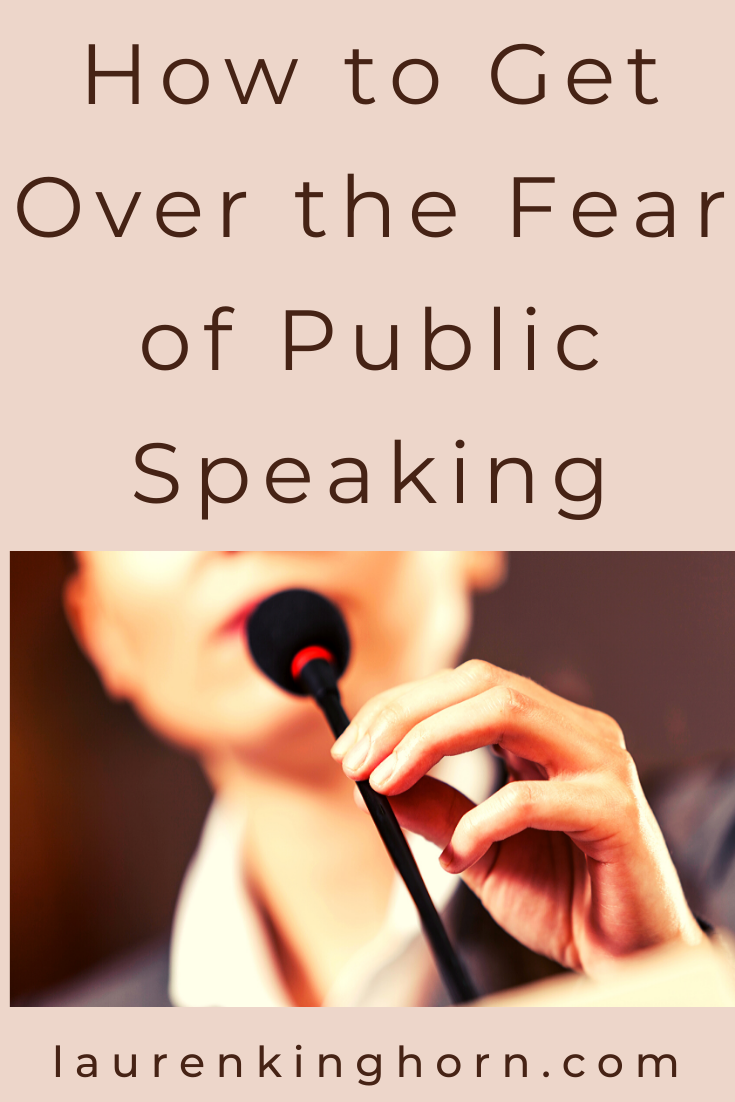You step up to the mic, hands trembling, heart pounding. You look out at the sea of faces hoping your jacket will hide the patches of perspiration forming under your arms.
At this point one of two scenarios can play out.
Scenario 1: The terror overtakes you.
Your entire body starts shaking uncontrollably, you stumble over your first few words and run off the stage with your head in your hands.
Scenario 2: You take control.
You take a deep breath, stand up tall, smile and scan the room as the audience settles down… and you’re off. You’ve got this. You launch into your speech confidently, passionately and you deliver your message with the perfect combination of power, ease and grace.
The goal of this article is to guide you to this special hallowed ground, where the stage becomes your safe place, where scenario 2 plays out for you. Every time.
How to Overcome the Fear of Public Speaking
This post was sponsored by Sam Haskell
If the thought of public speaking causes you to sweat and have heart palpitations, it is quite possible you have glossophobia – the fear of public speaking. And you are definitely not alone. Glossophobia is one of our most common fears.
The words public speaking can cause anxiety and fear in many people’s minds who are otherwise confident and highly competent in their professions.
So why do people put themselves through the torture of public speaking when there are so many other methods of boosting business exposure?
Because stepping up and speaking in public gives the impression that you’re a leading light in your field of expertise.
It’s a way to set yourself up as an authority, a thought leader, much like becoming an Author, but with one difference – it’s instant. One Ted Talk, one talk on an international stage or one YouTube video gone viral and you could set yourself up as an instant expert.
Public speaking also offers effortless referrals as well as better sales opportunities.
But we’re getting ahead of ourselves. Let’s quiet those fears.
Here’s a step-by-step strategy that will help you become a confident speaker.
Step 1: Start Small
If you’re a newbie when it comes to public speaking, begin small. Practice in front of friends and family. Or get yourself a tripod for your smartphone or webcam and start making videos – for no-one to watch at first.
Once you’re confident in front of one or two people or in front of your own camera at home, you can start speaking to small groups and gradually move your way up to larger audiences from there.
Keep in mind that the size of the audience doesn’t make any difference (except that the more people in the audience, the more energy you have to feed off). If you’re familiar with your topic, your jitters will start disappearing quickly.
Golden Tip:
No matter how big your audience, speak as if you’re speaking to one person, your best friend.
Step 2: Prepare Thoroughly
Nothing is as effective in easing your fear of speaking in public as knowing your subject, inside and out.
It helps to create a connection with your audience which is achieved through having confidence in your knowledge.
Practice your speech a few times before getting on the podium. And remember to have some back-up material just in case you have a bit more time left over.
Golden Tip:
Whether you attribute this to Brian Tracy, Dale Carnegie or Aristotle, most orators agree that a good speech follows this simple formula.
Tell them what you are going to say.
Say it.
Tell them what you said.
Step 3: When using Slides, do this
Most business presentations are drawn out monologues with seemingly endless bullet points and PowerPoint slides.
Some may suggest you discard the PowerPoint speech and rather make your material the focus point of the speech.
But if you need the security blanket of a slide presentation to jog your memory and keep you focused, here’s a tip for you.
Use one image, one word or one-phrase on each slide to promptly convey your message.
Golden Tip:
Harness the power of emotion. Use visual images that are humorous, touching or shocking (depending on your subject matter). This helps you emphasise your core points and also ensures your audience remember them.
Step 4: Reframe
Nervousness and excitement are flip sides of the same coin. They create the same bodily reactions.
So in your mind, if you just reframe your nervous jitters as excitement jitters, you’ll be fine.
You can use that energy to deliver a powerful talk.
Golden Tip:
Expect the crowd to adore you – and they will.

Step 5: Open Strong
You will be at your most nervous just before you start your talk. So get very clear on how you will open your speech.
Give a lot of thought to how you will get the audience’s attention. Consider opening with a question, some light humour or a personal story.
Start with the end in mind. Remember that in your introduction, you are setting the stage for your conclusion – tell them what you are going to tell them.
Rehearse your opening paragraph a few times so there’s no chance of you stumbling or mumbling those first few words.
Power poses are proven to work. Do a power pose or look in the mirror, take a long deep breath, and tell yourself you are confident and you’re going to ace this.
Golden Tip:
If there’s nowhere to practice a power stance privately before you go up on stage, consider doing it with the audience – get them to stand up with you, smile and raise their arms in the air or high five the person next to them.
This way you’ll all have a state change.
This is especially important if you notice that the crowd is looking bored or restless after the last talk. Movement acts as an icebreaker, and helps your audience feel more relaxed and receptive.
Step 6: Speak Naturally
Becoming a master at public speaking does not entail memorizing your entire presentation word for word.
It’s worth memorizing key points and prompts and some examples and subtopics to talk about.
Show up as your authentic self. Be as natural as you can.
Share some of your personal stories. This is always a good way of connecting with your audience.
Golden Tip:
Speak with passion. Your audience doesn’t care about how much you know, or how smart you are, they care about what’s in your heart.

Step 7: Engage Your Audience
Starting a monologue presentation places the onus on you to inform and entertain your audience.
Engage your audience by encouraging two-way interaction by asking questions, or cracking a joke here and there.
If you are going to use humour, just make sure it’s relevant and in good taste. Laughter works.
And so do tears. The goal is to help your audience remember your message and when they feel something during your speech they are a thousand times more likely to connect with what you’re saying.
Golden Tip:
Make eye contact with a few people in the audience during your talk.
Step 8: Close Strong
Every bit as important as your opening is your close. A good close takes careful planning and just like the opening, should be rehearsed.
Your close is your conclusion or summary, the chance to tell them what you’ve already told them by highlighting your main points.
Again, you can harness the power of storytelling or humour to drive your points home.
End your speech with a challenge or call to action.
And if the audience isn’t already on their feet giving you standing ovation or calling for an encore, give them an indication that you’re finished by thanking them for listening.

Golden Tip:
To increase the dramatic effect and power of your speech, think of your speech as an exquisite concerto.
Aim to build up to a crescendo at the end of your speech (raise your voice). Increase your tempo as you dash out your most important points. And then slow it right down to a whisper as you deliver your last impactful sentence.
One Final Tip
The power of your imagination is strong. If you focus on your fear of public speaking, seeing yourself shy and uncertain on stage, that’s exactly who you will be.
Instead, use your imagination to visualise yourself on stage confident and in control, delivering your message with power, ease and grace. Be the inspiration to the world you were always meant to be.
Your message is powerful. Do it justice. Write that brilliant speech and deliver it with passion. Step up and SHINE. You’ve got this.




